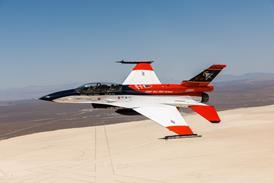A prominent Washington think tank is urging the US, China and Russia to curb the proliferation of hypersonic weapons over the next decade, before the missiles jeopardize national security for the three nations.
The US, China and Russia are leading development of hypersonic missiles, an emerging weapon capable of flying five-times faster than a conventional cruise missile, though technology is already spreading throughout Europe, Japan, Australia and India. The report, published 27 September by the RAND Corporation, recommends the three leading countries agree not to export complete hypersonic systems or major components to other countries. RAND also urges the larger international community to establish controls on hypersonic missile hardware and technology.
“There is probably less than a decade available to substantially hinder the proliferation process,” the report states.
The report rules out an international ban on hypersonic missiles, noting development is already too far along, and instead suggests multilateral export controls among the three countries and facilitated by like-minded nations such as France.
RAND, however, cites the controversial Missile Technology Control Regime (MTRC) as a model. The MTRC is a 35-nation gentlemen’s agreement designed to control ballistic missiles, unmanned air vehicles and some hypersonic technologies.
Major US-based UAV manufacturers, including Predator and Reaper-maker General Atomics, have long complained that MTCR hamstrings American UAV exports and facilitates sales of Russian and Chinese vehicles.
RAND also recommends an export denial policy for major hypersonic subsystems and a case-by-case review for scramjets and other hypersonic engines
While funding for the technology has ebbed and flowed, a recent uptick in hypersonic research has shown the US once again seems keen on hypersonics. The US Air Force boasts an arsenal of ground-launched ballistic missiles with hypersonic capability, but has no known air-launched weapons with the same speed.
The Defense Advanced Research Projects Agency has acknowledged at least two recent hypersonic efforts, the Hypersonic Air-breathing Weapon Concept (HAWC) and the US Air Force-led Tactical Boost Glide (TBG) programme. TBG aims to develop a conventional, air-launched, hypersonic strike weapon using solid rocket motors for propulsion and would continue work from DARPA’s Hypersonic Tactical Vehicle-2 (HTV-2) programme. Last year, Lockheed Martin scored a $147 million contract to develop a a TBG prototype, with speeds reaching Mach 20 after launching from a Boeing B-52.
But as the US treads tenuous ground with North Korea’s ballistic saber rattling, hypersonic missiles’ altitude and speed capabilities pose fatal game changers, RAND warns. The report notes that hypersonic missiles would threaten nations with limited strategic forces, leading the target nation to set up those forces to launch on warning. Though countries without missile defense systems are already threatened by today’s conventional and nuclear missiles, the report argues a hypersonic weapons increase instability by compressing the timeline for a response.
“These threats encourage the threatened nations to take such actions as devolution of command and control of strategic forces, wider dispersion of such forces, a launch-on-warning posture, or a policy of preemption during a crisis,” the report states. “In short, hypersonic threats encourage hair-trigger tactics that would increase crisis instability.”
Source: FlightGlobal.com
















